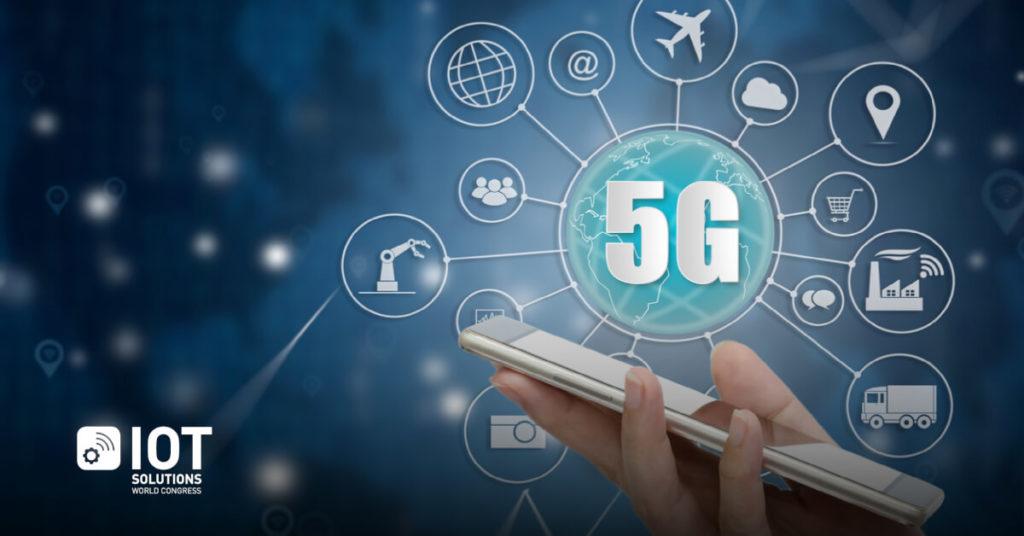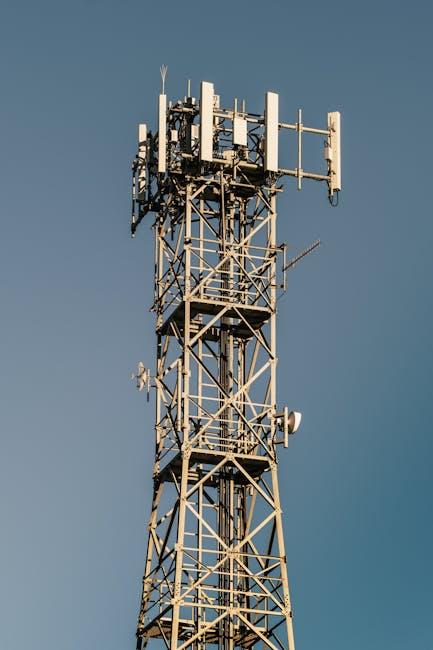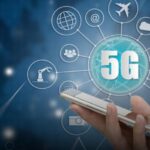
In the ever-evolving landscape of digital connectivity, the arrival of 5G marked a significant milestone, promising unprecedented speeds and transformative capabilities. Yet, as we stand on the brink of this new era, the horizon stretches even further, hinting at innovations that surpass our current imagination. “5G and Beyond: Unveiling the Future of High-Speed Internet” delves into the next chapters of this technological saga, exploring how advancements in wireless communication are poised to redefine industries, enhance daily life, and bridge the gaps that once seemed insurmountable. from the seamless integration of smart cities to the uncharted potentials of augmented reality, this exploration offers a thorough look at what lies ahead in the quest for faster, more reliable, and more pervasive internet connectivity.
Table of Contents
- Enhancing Connectivity Through advanced 5G Technologies
- Transformative Impacts on Key industries and Applications
- Overcoming Infrastructure and Security Challenges
- Expanding the Frontier Exploring 6G and Future Innovations
- Strategic Recommendations for Stakeholders in the Digital Era
- In Conclusion

Enhancing Connectivity Through Advanced 5G Technologies
As we venture deeper into the era of digital transformation, advanced 5G technologies are revolutionizing the way we connect and communicate. Unlike its predecessors, 5G offers unprecedented speeds and reliability, paving the way for seamless integration of smart devices and fostering innovations across various sectors. This enhanced connectivity is not just about faster internet; it’s about creating a more interconnected and efficient world.
One of the cornerstone advancements of 5G is its ability to support massive Internet of Things (IoT) deployments. From smart cities to autonomous vehicles, the low latency and high bandwidth capabilities of 5G enable real-time data processing and instantaneous communication between devices. This seamless interaction facilitates smarter infrastructure, optimized resource management, and improved user experiences, setting the foundation for future technological breakthroughs.moreover, 5G’s advanced network slicing technology allows operators to create customized virtual networks tailored to specific needs. Whether it’s for critical communication in healthcare or high-definition streaming in entertainment,network slicing ensures that each application receives the optimal performance it requires. This flexibility not only enhances connectivity but also drives efficiency and innovation across industries.
| Advanced 5G Technology | Key Benefit | Application |
|—————————-|——————————-|——————————-|
| Network Slicing | Customizable virtual networks | Healthcare, Entertainment |
| Massive MIMO | increased capacity and coverage | Smart Cities, IoT Devices |
| Beamforming | Enhanced signal strength | Autonomous Vehicles, AR/VR |
| Edge Computing | Reduced latency | Real-time Data Processing |
By harnessing thes advanced technologies, 5G is not merely an upgrade to existing networks but a transformative force that expands the horizons of what’s possible in connectivity and beyond.
Transformative Impacts on Key Industries and Applications
The advent of 5G technology is revolutionizing various industries by delivering unprecedented speed, lower latency, and enhanced connectivity. In healthcare, 5G facilitates telemedicine advancements, enabling real-time remote consultations and surgeries with minimal delay. This connectivity also supports the deployment of smart medical devices, allowing continuous patient monitoring and timely interventions, thereby improving overall patient outcomes.
In the realm of manufacturing, 5G is the backbone of the Industry 4.0 movement. Smart factories equipped with interconnected machinery can optimize production processes, reduce downtime through predictive maintenance, and enhance supply chain visibility. This seamless communication between devices not only increases efficiency but also fosters innovation through the integration of automation and robotics.
The entertainment and media sectors are experiencing a paradigm shift with 5G’s ability to support high-definition streaming and immersive augmented and virtual reality experiences. This technology enables content creators to deliver more engaging and interactive experiences to consumers, transforming how we consume media. Additionally, the transportation industry benefits from 5G through the advancement of autonomous vehicles and intelligent traffic management systems, which enhance safety and reduce congestion on the roads.
The table below highlights some key industries and the transformative applications driven by 5G technology:
| Industry | Transformative Applications |
|——————-|————————————————————|
| Healthcare | Remote surgeries, real-time patient monitoring |
| Manufacturing | Smart factories, predictive maintenance |
| Entertainment | Ultra-HD streaming, augmented and virtual reality content |
| Transportation | Autonomous vehicles, intelligent traffic management |
| Agriculture | Precision farming, drone-based crop monitoring |
As we look beyond 5G, emerging technologies promise to further accelerate innovation and efficiency across all sectors, heralding a new era of connectivity-driven progress.
Overcoming Infrastructure and Security Challenges
As we venture into the era of 5G and beyond, the demand for robust infrastructure and stringent security measures has never been greater. The transition from conventional networks to ultra-fast, low-latency systems requires considerable investments in new technologies, fiber optic expansions, and the deployment of numerous small cells to ensure comprehensive coverage. Building this intricate network infrastructure poses significant logistical and financial challenges, especially in densely populated urban areas and remote regions alike.
Parallel to infrastructure advancements, ensuring the security of 5G networks is paramount. The increased connectivity and the proliferation of Internet of Things (IoT) devices expand the attack surface, making networks more vulnerable to cyber threats.Protecting sensitive data, maintaining user privacy, and safeguarding critical infrastructure from potential breaches demand innovative security solutions and continuous vigilance. Collaborative efforts between industry stakeholders, policymakers, and cybersecurity experts are essential to develop resilient defenses and proactive strategies against evolving threats.
| Challenge | Solution |
|—————————–|———————————————|
| Infrastructure Costs | Public-private partnerships and funding incentives |
| Network Deployment | Strategic placement of small cells and fiber optics |
| Cybersecurity Threats | Advanced encryption and real-time threat monitoring |
| Device Compatibility | Standardization and widespread adoption of secure protocols |
By addressing these infrastructure and security challenges head-on, the transition to next-generation high-speed internet can be seamless and secure, unlocking unprecedented opportunities for innovation and connectivity worldwide.
Expanding the Frontier Exploring 6G and Future Innovations
Expanding the Frontier: Exploring 6G and Future Innovations
As the global community continues to harness the transformative power of 5G, the horizon is already expanding toward the next leap in connectivity: 6G. Expected to emerge within the next decade, 6G promises to redefine high-speed internet with speeds reaching up to 1 terabit per second, vastly outpacing its predecessor. This monumental increase in bandwidth will not only enhance current applications but also unlock new possibilities in fields such as augmented reality, autonomous systems, and smart infrastructure.
One of the most exciting prospects of 6G is its potential to integrate advanced artificial intelligence directly into the network fabric. This integration will enable more intelligent data processing, adaptive network management, and personalized user experiences in real-time. Furthermore, 6G is anticipated to operate across terahertz frequencies, allowing for unprecedented data transmission rates and supporting the simultaneous connection of billions of devices within the Internet of Things (IoT) ecosystem.
| Feature | 5G | 6G |
|——————-|————————|————————–|
| Speed | Up to 20 Gbps | Up to 1 Tbps |
| Latency | ~1 ms | Sub-millisecond |
| Frequency Bands | up to 100 GHz | Up to 1 thz |
| IoT Capacity | Millions of devices | Billions of devices |
| AI Integration| Limited | Fully integrated AI |
Beyond speed and connectivity, 6G is set to drive innovations in areas such as holographic communications, real-time language translation, and advanced cybersecurity measures. these advancements will not only enhance personal and professional interactions but also bolster critical infrastructure and services. As research and development accelerate, the transition from 5G to 6G will mark a pivotal shift in how we interact with technology, fostering a more connected and intelligent world.
Strategic Recommendations for Stakeholders in the Digital Era
As the landscape of high-speed internet continues to evolve with the advent of 5G and beyond, stakeholders must adopt forward-thinking strategies to stay competitive and relevant. Embracing technological advancements is not merely an option but a necessity for sustained growth and innovation in this rapidly changing digital ecosystem.To navigate this complex surroundings effectively, different stakeholders must tailor their approaches to leverage the full potential of next-generation connectivity. The table below outlines key strategic recommendations tailored for various stakeholder groups:
| Stakeholder | Strategic Suggestion | Expected Benefit |
|———————-|——————————————————-|———————————————-|
| Telecom Providers| Invest in infrastructure upgrades and network expansion | Enhanced coverage and service reliability |
| Businesses | Integrate IoT and AI technologies into operations | Improved efficiency and data-driven insights |
| Policymakers | Develop supportive regulations and standards | Foster innovation while ensuring security |
| Consumers | Stay informed about new technologies and their uses | Maximizing the benefits of high-speed internet|
Collaboration across these stakeholder groups is pivotal to harness the collective strengths and address the challenges posed by the digital era. By implementing these strategic recommendations, each group can contribute to a robust and resilient high-speed internet framework, ensuring that the promise of 5G and beyond is fully realized for all.
In Conclusion
As we stand on the brink of a new era in connectivity, the advancements brought forth by 5G technology lay a robust foundation for the innovations yet to come. Beyond faster speeds and lower latency,the potential applications—from smart cities and autonomous vehicles to groundbreaking developments in healthcare and education—promise to reshape our daily lives in profound ways. As researchers and industry leaders continue to push the boundaries, the journey towards even more sophisticated networks remains both exciting and uncertain. Embracing these changes with thoughtful consideration will be key to harnessing the full benefits of high-speed internet’s future. In navigating this evolving landscape, the collective efforts of technology pioneers and global communities will ultimately define the next chapter of our interconnected world.





















